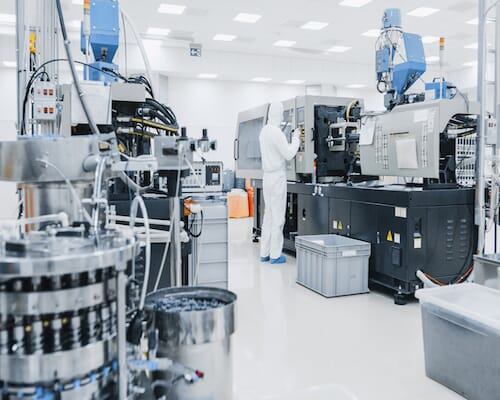
Positive Displacement Compressor: Key Info
February 22, 2023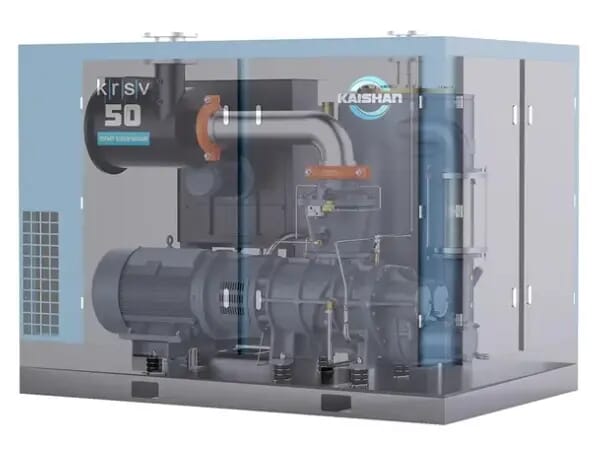
Kaishan USA Launches New Industrial Vacuum Pump
March 15, 2023Quality is Job One in Automotive Air Compressors
Kaishan USA | March 8, 2023 | Uncategorized
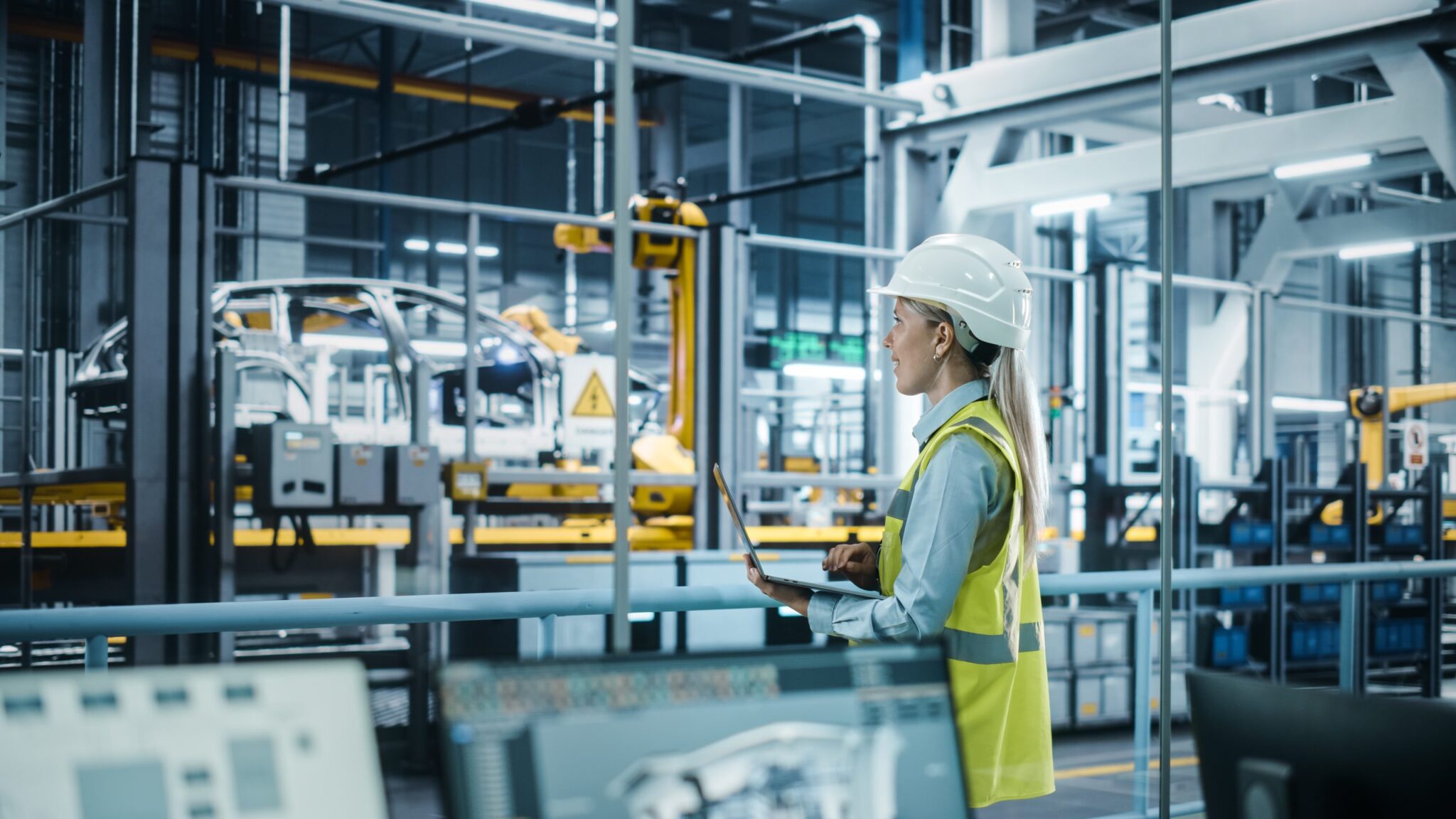
A variety of automotive applications need high-quality compressed air.
When they’re pushed to consider which applications require high-quality air, most people immediately think of the healthcare, semiconductor and food industries.
For good reason: these applications require the process level, the third of the four main compressed air quality levels established by the voluntary industry group, Compressed Air Challenge.
They’re missing one large market, however. Automotive applications—from corner auto body shops to Tesla-level assembly facilities—also need high-quality, high-purity compressed air.
Admittedly, the requirements for automotive painting are as demanding as food, and electronics or pharmaceuticals. But they are at the instrument air level, applied to more exacting operations like powder coating and other industrial painting operations. Oil carryover is especially avoided because of its effect on the paint's appearance.
And while the standards for automotive processes like pneumatics or robotics are not as rigid as for painting, these applications, in fact, are sensitive to moisture and particulates. And, as mentioned, need high-quality compressed air as well.
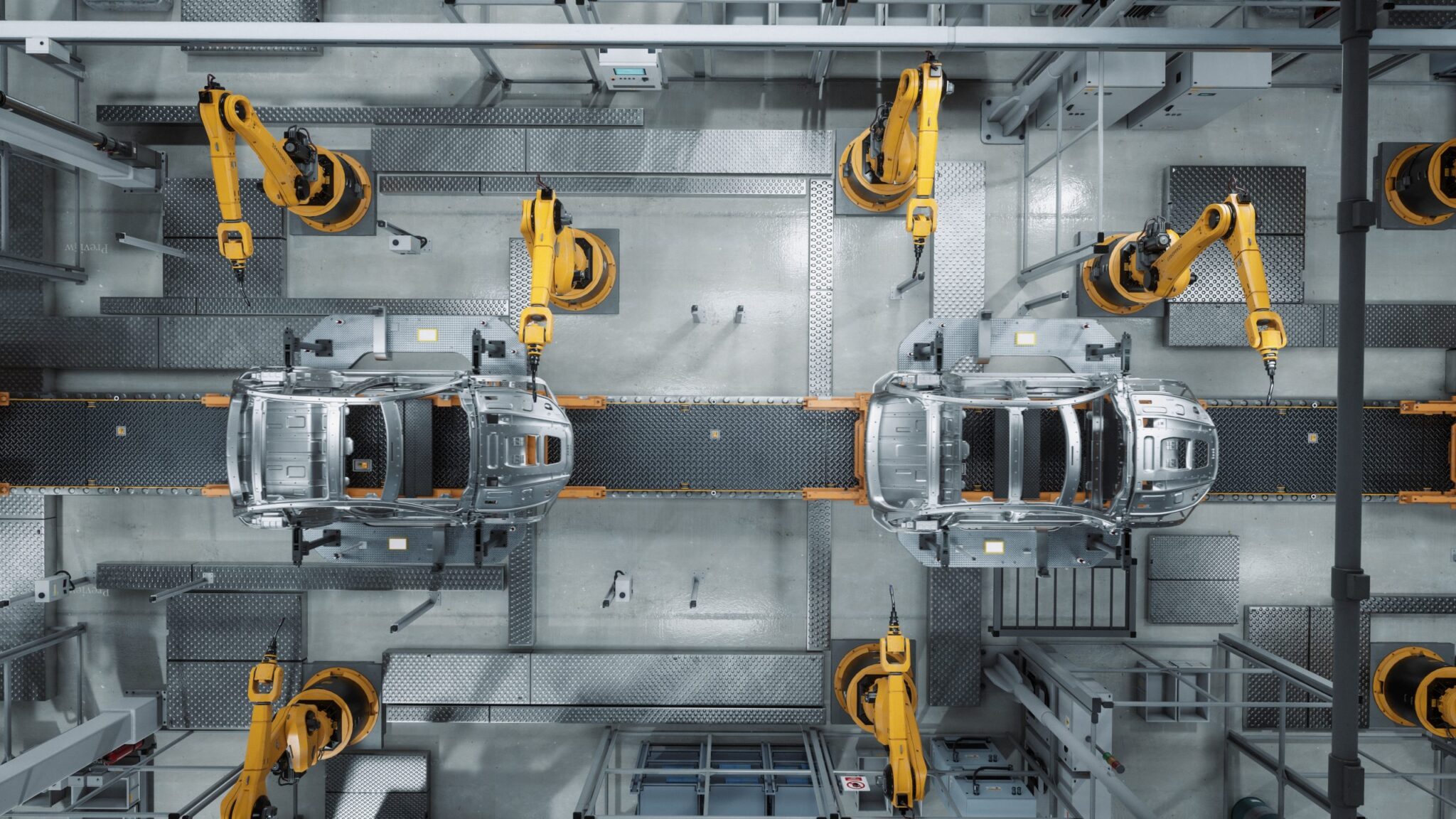
While painting is an obvious application, automotive applications also need high-quality air for functions like robotics and pneumatics.
The good news? Air quality is where rotary screw air compressors truly stand out.
Why Painting Is Different
Almost every community in America has a collision center, body shop or car dealership that does automotive painting. That takes quality air compression far beyond the assembly plants in Detroit (and other scattered locations) and makes it a nationwide, bread-and-butter activity.
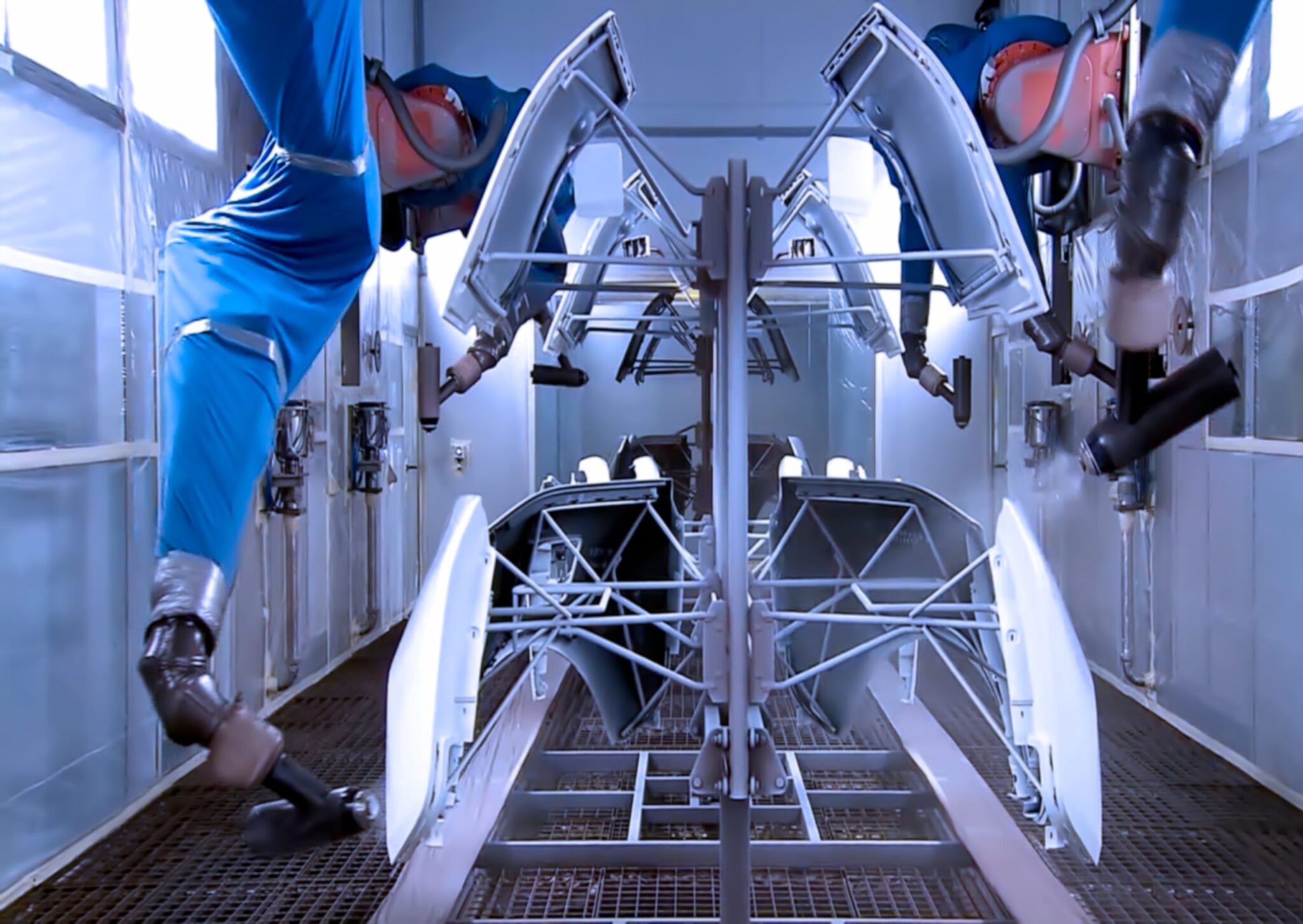
Automotive painting applications need a steady flow of high-quality compressed air to achieve the mirror finish car owners love.
Traditional oil-lubricated reciprocating piston compressors have several obstacles that limit their ability to produce the level of air quality that automotive painting applications require. For example, piston machines occasionally emit bigger oil slugs that sometimes make it through oil separators. And their air supply can fluctuate, pulsating slightly.
Screw Compressors to the Rescue
Rotary screw air compressors, on the other hand, excel at delivering a steady flow of compressed air with none of the pulsations and uneven flows that drive automotive paint applicators crazy.
That’s why rotary screw compressors play such a significant role in the automotive aftermarket. Every local body shop, collision center or dealership seems to have one (or more).
Not only is the air clean, but it also has none of the slugs of oil that could cause pitting or imperfections in what should be a mirror finish. It is also free of moisture, which could mar the surface.
How do they do that? Rotary screw air compressors have several capabilities that enable them to deliver high-quality compressed air:
1. Air/Oil Separation
Rotary screw air compressors have a three-stage oil separator circuit that traps oil particles before the air is discharged.
Air enters the oil separator and immediately hits a baffle to slow it down. The air then spins up through the tank in a centrifugal motion that expels the oil particles. Finally, the remaining traces of oil are removed as the air exits through a filter element.
Routinely, air-oil separators limit oil carryover to 3 parts per million (ppm), sometimes getting as low as .1 ppm with an after-filter. All Kaishan rotary screw air compressors have a 3 ppm rating, relying on a three-stage tangential oil separation system to keep the lubrication inside the compressor and not pass it downstream.

Thanks to its three-stage tangential oil separation system, Kaishan’s KRSP2 rotary screw air compressor has a 3 ppm rating for oil carryover.
2. Air-Cooled Aftercoolers
Rotary screw air compressors also have air-cooled aftercoolers that keep discharge air quality high. And the cooler the air is, the easier it is to treat.
The compressed air passes through a heat exchanger that lowers the discharge temperature of the air to within 15°F above ambient temperatures. By reducing the temperature so significantly, the aftercoolers remove 70% of the moisture in the air. The water drains out of the system through a moisture trap.
Because they are such a critical component, Kaishan makes its own aftercoolers, controlling quality, performance and price. And we are one of the few manufacturers who include aftercoolers in our 5 to 15 HP units.
3. High-Performance Filters
Screw compressors can achieve even higher levels of air quality by adding downstream filters:
- Particulate air line filters remove dust, pollen and dirt
- Coalescing air filters remove liquids like water, aerosols, lubricants and other oil particles
- Activated carbon filters attract and immobilize gaseous contaminants, removing vapors and odors and driving oil carryover even lower.
Kaishan Quality Available Locally
If you need high-quality compressed air for an automotive application (or any other, for that matter), we have a team in your area who can help you select the right industrial air compressor for your needs. Kaishan is fortunate to work with a nationwide network of independent distributors, who can provide on-site help and consultation as needed. These factory-trained air compression experts have an investment in their local communities and can service your industrial air compressor system without a problem.
Key Takeaways
- Automotive applications—from corner auto body shops to Tesla-level assembly facilities—also need high-quality, high-purity compressed air.
- Rotary screw air compressors excel at delivering a steady flow of compressed air, with none of the pulsations and uneven flows that drive automotive paint applicators crazy.
- Rotary screw air compressors have several key features that enable them to deliver high-quality compressed air.
- Air/oil separators limit oil carryover to 3 parts per million (ppm).
- Air-cooled aftercoolers remove 70% of the moisture by lowering the temperature to within 15°F above ambient.
- High-performance filters include particulate air line filters, coalescing filters and activated carbon filters.
Let Us Help
If you are looking for ways to improve the quality and performance of your compressed air system, we can help. From belt-driven, single-stage and two-stage rotary screw air compressors to centrifugal compressors and industrial vacuum pumps, we have what you need. Get in touch with the experts at Kaishan. Contact us today.
Random stat or
customer quote
textXXtext
text
When they’re pushed to consider which applications require high-quality air, most people immediately think of the healthcare, semiconductor and food industries.

